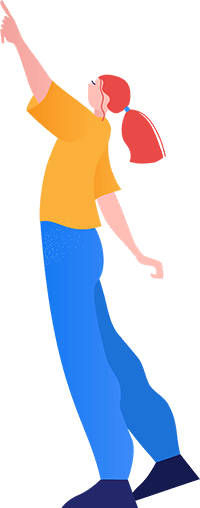
- October 31, 2025
- allix
- Research
Back pain is something almost everyone experiences at some point — a pulled muscle from lifting something the wrong way, stiffness after long hours at the desk, soreness after a workout. Usually, it passes. But sometimes, it doesn’t. Sometimes the pain becomes sharp, radiates down the leg, creates numbness or weakness, or makes walking, sitting, or even sleeping feel like a battle. When symptoms stop being a discomfort and start becoming part of daily life, it can feel frightening and exhausting.
That kind of pain often comes from a herniated disc pressing on a spinal nerve. The body tries to manage it on its own — rest, medication, physical therapy, stretching. And very often, that works. But there are moments when conservative treatment is not enough. When nerve pain becomes unmanageable, when movement becomes limited, or when weakness begins to interfere with daily function, the focus shifts. Relief is no longer just a wish — it becomes essential.
This is where microdiscectomy steps in: a minimally invasive surgical procedure designed to remove the part of the disc causing compression, relieve nerve pressure, and restore mobility and comfort. It isn’t about “fixing everything at once.” It’s about giving patients their life back — walking without fear of a pain flare, sitting without numbness, waking up without dread.
A Modern, Precise Approach to Spinal Relief
Microdiscectomy is different from older, more invasive spine surgeries. Instead of large incisions and long recovery times, it uses small openings, microscopes or magnification, and careful micro-instruments to reach the affected disc. The goal is simple: decompress the nerve with as little disruption to surrounding tissue as possible.
What patients notice most isn’t the technology — it’s the difference afterward. Pain that once shot down the leg suddenly eases. Numbness fades. Strength begins to return. The world shifts from “How do I get through today?” to “I can move again, breathe again, live again.”
When patients describe the relief, the emotional side is always present. They talk about feeling like themselves again — being able to walk outdoors, carry a child, sit in a car, or simply turn over in bed without fear. Mobility isn’t luxury — it’s freedom. And recovering that freedom is deeply personal.
Choosing the Right Place for Spine Surgery Matters
Microdiscectomy, while minimally invasive, is still a specialized procedure. Nerves, muscles, spinal structures — they require skilled hands and advanced techniques. Picking the right clinic isn’t just about equipment. It’s about experience, thoughtful evaluation, and guidance throughout the entire process.
Many patients look for:
- surgeons who perform microdiscectomy regularly
• facilities using advanced imaging and neural monitoring
• individualized pre-operative assessment
• rehabilitation and mobility guidance afterward
• warm, informative communication rather than rushed decisions
Feeling heard matters just as much as the technical skill. Because pain isn’t just physical — it affects mental clarity, mood, sleep, relationships, confidence. A supportive medical team eases more than the spine; it eases the mind.
That is why curated medical platforms have become a trusted starting point. They help patients avoid uncertainty and connect directly with verified providers rather than navigating the medical world alone.
For those exploring options, this page provides access to clinics specializing in microdiscectomy for herniated disc and nerve compression, allowing patients to move forward with clarity:
microdiscectomy treatment specialists
It offers a safer starting point — real clinics, real surgeons, real guidance.
What Patients Can Expect on Their Journey
The process usually begins not in the operating room, but in consultation — understanding where the pain originates, evaluating imaging such as MRI, discussing symptoms, and exploring whether the disc herniation truly requires surgery. Good surgeons don’t rush patients. They review options, examine mobility and nerve function, and only recommend microdiscectomy when it’s truly appropriate.
When surgery is chosen, it’s often performed on an outpatient basis or with a short hospital stay. Patients are encouraged to walk soon after the procedure. The body begins its quiet, steady return to balance — nerves recover, inflammation settles, strength rebuilds.
Recovery is individual, but the trend is hopeful: gradual regained movement, week by week improving comfort, confidence returning step by step. The feeling of waking up and knowing that the pain that once dominated life is lifting — patients describe that moment as emotional, freeing, and sometimes overwhelming in the best way.
Support doesn’t stop after surgery. Patients receive movement guidance, rehabilitation tips, and practical advice — when to stretch, when to strengthen, how to ease back into activity safely. It’s not simply “get surgery and go home.” It’s “let’s help you heal, not just operate.”
Living Again Without Fear of Every Step
Pain creates hesitation. It creates fear around movement — bending to pick up something, stepping wrong, turning too quickly. After microdiscectomy and proper recovery, that fear softens. Life feels open again.
People talk about returning to the activities they love — walking comfortably, traveling, working without constant shifting and stretching, playing with children or grandchildren, exercising without dread. Pain steals confidence. Healing brings it back.
Not every case needs surgery — and ethical specialists will always explore conservative care first. But when microdiscectomy is the right choice, it often becomes a turning point: not the end of movement, but the beginning of getting it back.
Taking the First Step Toward Relief
No one chooses spine surgery casually. It comes after thought, research, and often after long days of discomfort. But choosing the right team turns fear into direction and uncertainty into hope.
If you are exploring advanced care for herniated disc treatment and nerve compression, vetted clinics specializing in microdiscectomy can be found here:
microdiscectomy spinal surgery clinics
It’s a starting point built on trust, clarity, and expert support — guiding you toward specialists who understand not just the spine, but the experience you’re living through.
When pain has taken too much, choosing to move toward relief is not weakness — it’s strength. It’s choosing comfort, mobility, and quality of life again. And with the right hands guiding the process, recovery becomes more than a medical outcome — it becomes a story of taking your body and your life back.
You deserve movement without fear. You deserve relief that lasts. When you’re ready, the path is here.
Categories
- AI Education (39)
- AI in Business (65)
- AI Projects (87)
- Research (103)
- Uncategorized (5)
Other posts
- Finding Care, Calm, and Confidence: Why Patients Are Looking Toward Beroun in the Czech Republic
- Choosing Health, Energy, and a New Future: Exploring Gastric Bypass in Diyarbakır, Turkey
- When Facial Hair Tells Your Story: Considering a Beard Transplant in Phuket, Thailand
- When Prevention Becomes Power: Understanding Liver Cirrhosis Risk and Modern Screening Approaches in Spain
- When the Abdomen Signals Something Serious: Understanding Abdominal Aortic Aneurysm and Getting Expert Evaluation in Islamabad
- When Back Pain Becomes More Than “Just Pain”: Understanding the Need for Microdiscectomy
- Feeling Comfortable in Your Skin Again: Considering an Arm Lift in Tijuana
- Plastic Surgery Clinics in Costa Rica: Affordable Excellence in Aesthetic Care
- Plastic Surgery Clinics in Switzerland: Precision, Safety, and Natural Results
- Seeking Top Doctors in Pakistan: Affordable Excellence in Global Healthcare
Newsletter
Get regular updates on data science, artificial intelligence, machine



